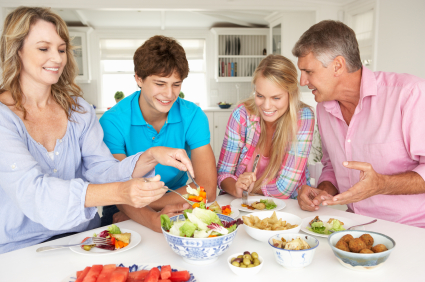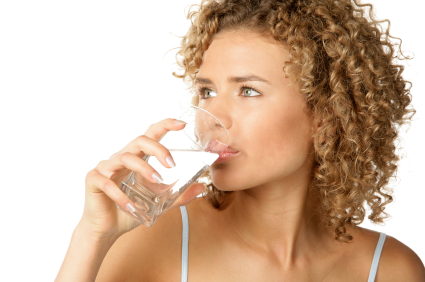Did you know that the average restaurant meal is now four times larger than a meal in the 1950’s? It’s no wonder that the average adult is 26 pounds heavier than sixty years ago!
You can lose weight with portion control. That’s one of the most important secrets behind weight loss. When you cut back on portion sizes and take a balanced approach to healthy eating, you will see your weight drop.
Unlike restrictive diets which can lead to binging, portion control teaches you how to eat the foods you like in moderation. You may be asking how to control portion sizes without scales and various other measuring tools, or what to do when you eat out. Great questions!
Five Simple Tips for Portion Control:
1) Read the fine print! Yes! The labels will tell you how many calories, but make sure you read how many servings are in that bag of chips, energy drink, soda, box of crackers, etc. Most snack size bags are actually two servings — not one!
2) Are your plates super sized? Over the years it’s become fashionable to have large plates. Don’t worry, I’m not going to tell you to get new dishes! However, a plate that is smaller will appear fuller and may satisfy you more.
If you feel like you need the extra visual help, you can purchase plates that have the portion sizes built into them. Everything from plastic to china. Another way I combat the empty looking plate is to use bowls. They appear fuller and I am able to scoop out the proper portion sizes with a ladle.
3) Develop a simple visual system. Not all plates are created equal. so it’s helpful to know what a proper serving is. Here are some visual cues/examples to help you with portion size:
- Vegetables or fruit: about the size of your fist.
- Carbohydrates like pasta, rice, and starchy vegetables: A single serving is 1/2 cup or the size of a cupcake wrapper.
- Meat, fish, or poultry: the size of a deck of cards or the size of your palm (minus the fingers).
- Snacks such as pretzels and chips: about the size of a cupped handful.
- Apple: the size of a baseball.
- Potato: the size of a computer mouse.
- Bagel: the size of a hockey puck.
- Pancakes or lunch meat: the size of a compact disc.
- Cheese: the size of a pair of dice or the size of your whole thumb (from the tip to the base).
- A tablespoon of food such as peanut butter, salad dressing, hummus: The size of your whole thumb.
4) It’s okay to go back for seconds! Try serving from the kitchen counter to avoid reaching mindlessly for a second helping. If after 20 minutes you are still hungry, then go back and load up on veggies or a 1/4 to 1/2 second serving.
Eating out? No problem. Ask your server about the portion sizes. Start with one or two dishes and then decide if you want more. The kitchen will still be there!
5) You do not have to finish everything on your plate! Many of us were raised not to waste. This was a really important thing to teach us as children, and I am grateful for that up-bringing. Unfortunately, this has been linked to overeating in adults.
I give you full permission to leave food on your plate. You will not be sent to your room! That may sound silly. However, so much of our childhood training affects the way we look at food. If you are like me and really dislike wasting food, then simply place whatever is left in a small container. You can have it as a snack or combine it with your lunch.
So there you go! These strategies can be implemented right away to help you with weight loss. Portion control is one of the best ways to begin cutting back on unnecessary calories without depriving yourself.
Have questions or tricks to share? I’d love to hear from you below!
Blessings to you and yours!
Jennifer



